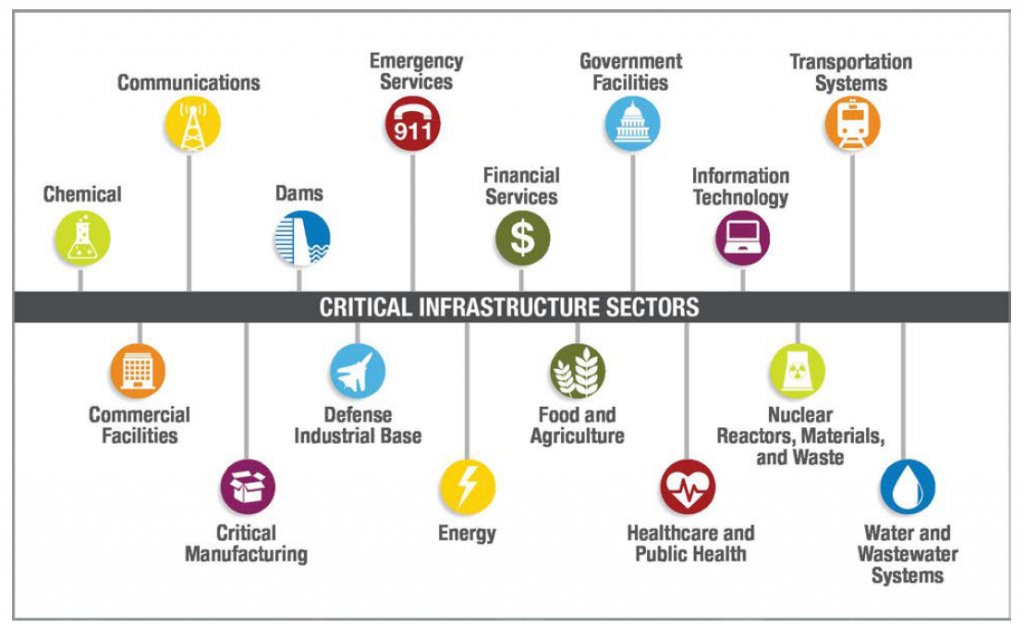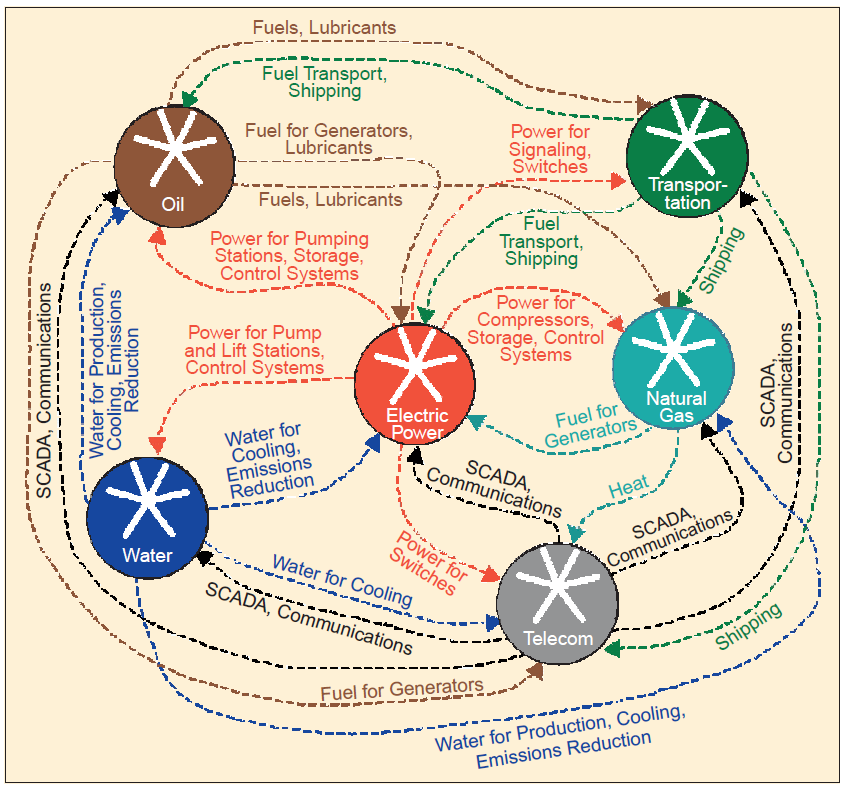Importance of Critical Infrastructure in our society.
Hello readers! We hear a lot about critical infrastructures, their importance in our society, and why there is a need to protect them. Therefore, In this blog, I have discussed the basic concepts of any critical infrastructure by introducing the general definition, their types, threats, and vulnerabilities posed to them.
“Critical Infrastructure” (CI) is a term defined by the government to describe an asset, system, or part thereof located in a nation’s which is essential for the maintenance of vital societal functions, health, safety, security, economic or social well- being of people, and the disruption or destruction of which would have a significant impact in a nation as a result of the failure to maintain those functions [1]. There are 16 CI sectors identified by the US government such as chemicals, commercial facilities, communications, financial services, public health, energy, information technology, and so on. Different types of Critical infrastructure are explained and Fig. 1 is adopted from [2]:

Figure 1: The Critical Infrastructure Sectors [2].
Nowadays, most SCADA systems are installed for the above-mentioned infrastructures to automate the control processes of the systems or subsystems. SCADA systems are electronic control systems that are usually used for data acquisition purposes. Therefore, SCADA systems are the backbone of critical infrastructures and are extensively used [3]. So, if any malfunction happens to the SCADA systems that will cause serious problems.
Critical Infrastructure is always a subject of interest when they are exposed to threats either due to natural or man-made disasters. Natural threats like earthquakes or tsunamis could affect the transportation sector. Similarly, man-made threats are also referred to as cyber-attacks. These threats may result in debilitating effects on the society and the economy of any country as a whole. Hence, SCADA systems could be more vulnerable, especially to cyber- attacks.
Critical Infrastructures are highly dependent on each other either directly or indirectly. Therefore, attacks on one infrastructure may cause serious effects to other infrastructure. To explain the interdependencies, we support it with an example taken from [4]. Fig. 2 shows the interdependencies between the infrastructure.

Figure 2: Different Critical Infrastructure interdependencies with installed SCADA systems [4].
In this case, as an example, from the infrastructure interdependency point of view, we can observe there is a continuous water supply that serves to cool the natural gas, oil reserves especially engine oil (fuels, lubricants), electric power for the pump stations, control systems and Telecom for SCADA & communications. All these systems are interconnected and they depend on each other for the proper functioning of the individual systems.
Thus, we can conclude that critical infrastructure plays an important role in our society, nation, or country because they contribute to the economy. They should be maintained well under any circumstances as they are always at high risks of threats and vulnerabilities in and around these infrastructures. To protect them against threats specially, due to cyber- attacks, proper initial measures should be taken. As CI are interdependent on each other, failures or malfunctions may affect other infrastructures too.
References
[1] Council Directive 2008/114/EC of 8 Dec. 2008 on the identification and designation of European critical infrastructures and the assessment of the need to improve their protection[2] Critical Infrastructure Threat Information Sharing Framework- A reference Guide for the Critical Infrastructure Community, October 2016.
[3] J.S. Foster, E. Gjelde, W.R. Grahman, et.al. “Report of the Commission to Assess the Threat to the United States from Electromagnetic Pulse (EMP) Attack- Critical National Infrastructures”, April 2008.
[4] S.M. Rinaldi, J.P. Peerenboom, T.K. Kelly “Identifying, Undersatnding, and Analyzing Critical Infrastructure Interdependencies”, Dec. 2001.
About the Author: Samikshya Ghosalkar
 Samikshya Ghosalkar is an Early Stage Researcher for MSCA ETN- PETER Project in the Department of Institute for Fundamentals of Electrical Engineering and Measurement Technology at the Leibniz University Hannover. She will carry out research on Statistical Electromagnetic Risk Analysis of Large and Complex Systems, Development of Theoretical Description of Risk Assessment Methodologies.The objective is to develop statistical EMI-aware risk-assessment methodologies that combine both technical and non-technical aspects. The ESR is expected to provide the theoretical background for an EMI-aware risk assessment of large interconnected systems.
Samikshya Ghosalkar is an Early Stage Researcher for MSCA ETN- PETER Project in the Department of Institute for Fundamentals of Electrical Engineering and Measurement Technology at the Leibniz University Hannover. She will carry out research on Statistical Electromagnetic Risk Analysis of Large and Complex Systems, Development of Theoretical Description of Risk Assessment Methodologies.The objective is to develop statistical EMI-aware risk-assessment methodologies that combine both technical and non-technical aspects. The ESR is expected to provide the theoretical background for an EMI-aware risk assessment of large interconnected systems.


